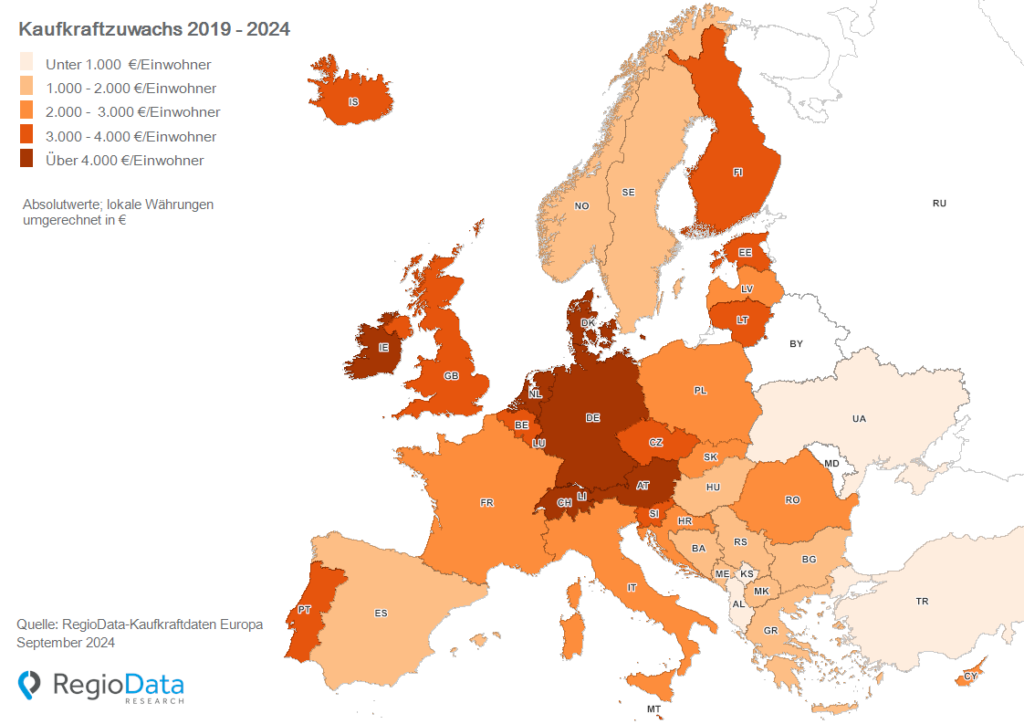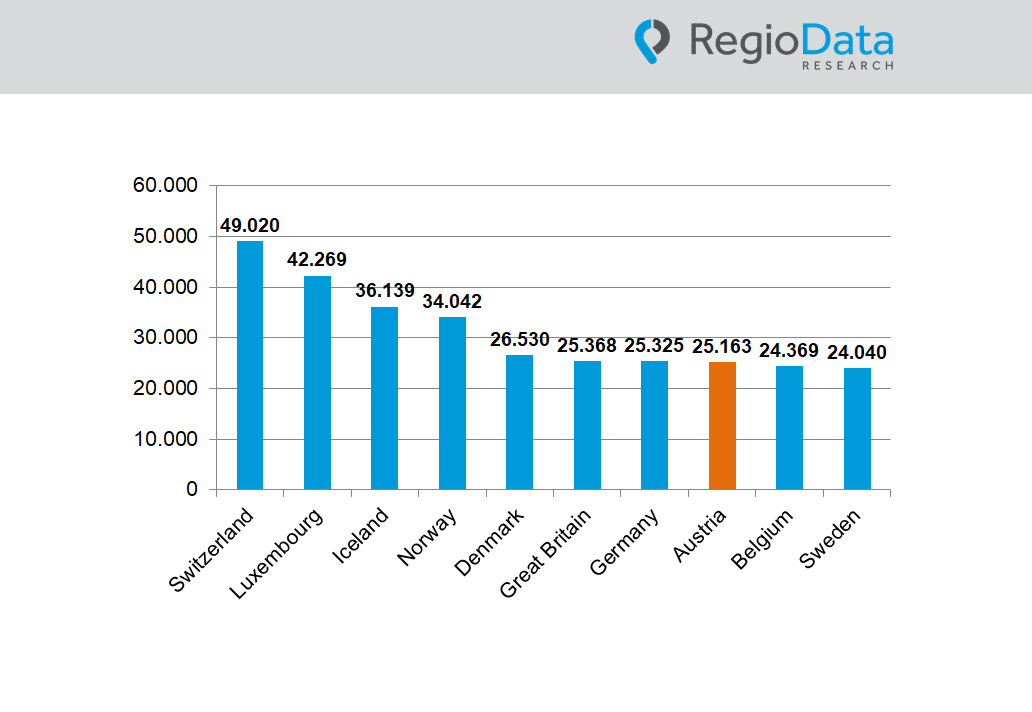Europe
Increase in Purchasing Power
The annually conducted RegioData purchasing power analysis reveals significant differences in the development of wealth levels among European countries. Despite these disparities, it can be observed that the inhabitants of all European countries on average have more financial resources available today than they did five years ago.
The Swiss achieved by far the highest increases in purchasing power (nominal, converted into €) during this period: with just under €13,000 per inhabitant per year, their figure is twice as high as that of the second-ranked country, Luxembourg, with €6,200. The Netherlands (+€4,800) and Ireland (+€4,500) follow in the next positions. Austria secured fifth place in the European ranking with an absolute increase of €4,400, just ahead of Germany. Finally, Denmark, the United Kingdom, the Czech Republic, and Belgium complete the top 10 with increases ranging from €3,500 to €4,000.
For understandable reasons, Ukraine recorded practically no growth. Also at the lower end of the ranking, with hardly any measurable change, is Turkey, where high inflation has led to a significant real loss in purchasing power. Albania and Kosovo are also at the bottom of the ranking.
Unexpectedly high increases (around €3,000) were achieved by Finland and the Baltic states over the past five years. In contrast, Norway, Sweden, and Spain disappointed with increases below €2,000.
Overall, this long-term analysis shows that the wealthy Western European countries also recorded the largest increases during the observation period. However, when comparing the increases relative to the total available purchasing power, most Balkan countries (ex-Yugoslavia, Romania, Bulgaria) performed the best, followed by the Czech Republic and Poland.
Based on currently available data, Germany, Italy, and France are expected to see only modest increases in the coming years. In contrast, particularly dynamic developments are anticipated in Malta, Ireland, Poland, Hungary, and Romania.
Share post




